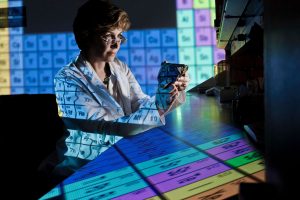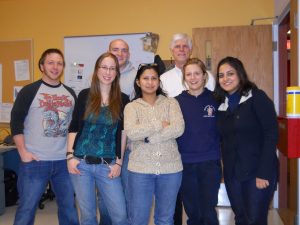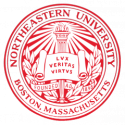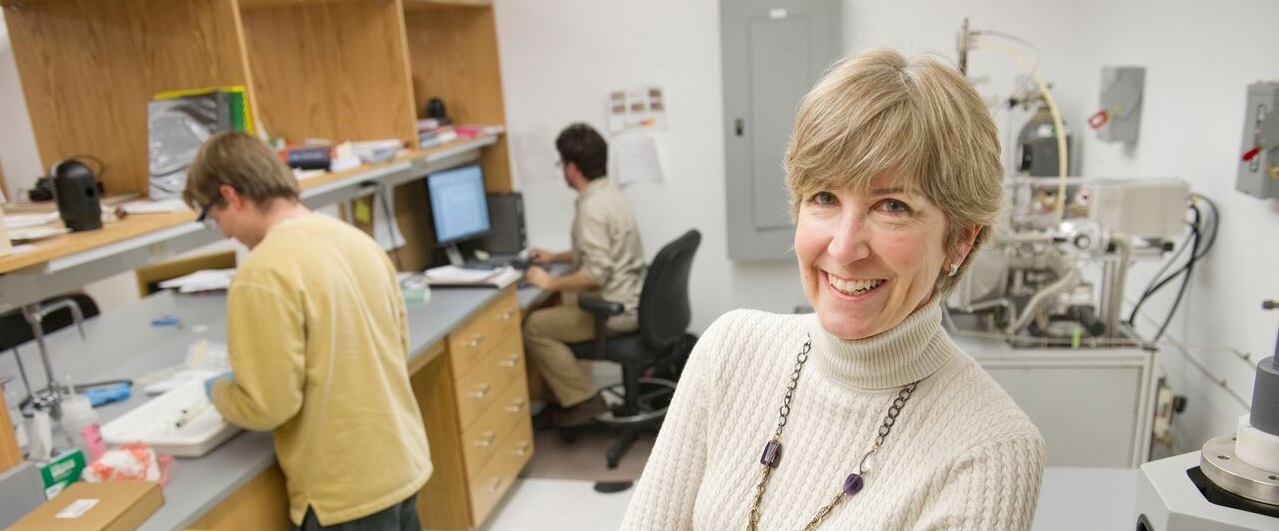The Nanomagnetism Group focuses on the synthesis and characterization of magnetic nanomaterials with the aim of contributing fundamental knowledge to enable advanced applications towards energy management, memory storage, and multifunctional devices. Currently we are researching magnetostructural phase transitions, advanced permanent magnet nanomaterials, ferromagnetic semiconductors and amorphous magnetic nanoparticles. Explore Nanomagnetism Group Research
The Lewis and Heiman Labs carry out materials synthesis as well as characterization and analyses. Synthesis methods available to the group include arc-melting, rapid solidification (melt-spinning), and thin film synthesis via Molecular Beam Epitaxy (MBE), thermal evaporation, and anodization. Characterization of the magnetic and phase state is carried out via X-ray diffraction (XRD), electron microscopy, atomic/magnetic force microscopy, magnetometry (Superconducting Quantum Interference Device or SQUID), and thermal analysis. Synchrotron-based spectroscopy and scattering probes are also employed for advanced materials characterization.Who We Are
Welcome to the Northeastern University Nanomagnetism Group. We are an interdisciplinary research group led by Prof. Laura H. Lewis (College of Engineering) and Prof. Don Heiman (College of Science). Our group of research scientists, graduate students, and undergraduate students work on a variety of research topics that aim to gain fundamental understandings of process-structure-magnetism correlation in technologically relevant magnetic and electronic materials.What We Do

Lab Collaborations

L. H. Lewis' research in the field of nanomagnetism seeks to clarify the basic structural and magnetic factors controlling the technical magnetic response in functional magnetic nanomaterials, including advanced permanent magnets. Magnetic nanomaterials, with grain sizes in the range 10 - 100 nm, offer properties unique from their bulk counterparts by virtue of their extremely large surface:volume ratios. The dominance of the surface atoms over the bulk atoms in nanosystems changes the relative strengths of the energies involved in the transition (elastic, magnetic, anisotropies) and is thereby anticipated to change the nature of the magnetic ground state. Nanostructured magnetic materials are anticipated to form the basis of a variety of functional devices including ultra-strong, ultra-light magnetic components for transportation systems, highly efficient transformers and motors, vibrational energy harvesting devices and multifunctional sensors.
Professor Heiman's research focuses on several challenging and technologically important areas: topological insulators and semimetals; antiferromagnetic Heusler materials; novel magnetic materials for spintronic devices; and magnetic 2D layers. The group's primary experimental tools include: molecular beam epitaxy (MBE) and physical vapor deposition crystal growth; ultrasensitive SQUID magnetometry; and electrical transport in high magnetic fields. Research is in collaboration with several dozen institutions including MIT and the US Naval Academy. Resent research has been published in Nature journals, Physical Review Letters, and other APS journals. The research is supported by the NSF and DOD.Lewis Lab

Heiman Lab




